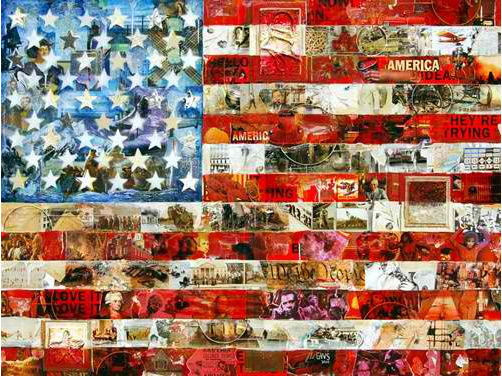
Welcome to the America (U.S.A.) Primary Source Guide. This guide is designed to assist researchers like you by presenting a curated list of resources. In the case of the curated book list, you will find some free-to-use eBook titles through HathiTrust, and other titles are owned by Florida Atlantic University Libraries. If you are affiliated with FAU Libraries, physical copies of specific titles are available for checkout. Unaffiliated university members can request these titles through your library's Interlibrary Loan Department. Additionally, many links lead to websites on the internet, while some resources may be accessible only through library databases for university associates. This guide is dynamic, with new links added and removed periodically. Best of luck with your research endeavors!
Attention users: If you encounter a broken link using this guide, please email me. Include the following information: the name of the guide, the specific page where the link is located, and the name of the broken link. Your feedback helps ensure that the links remain functional and practical. Thank you so much for your help in maintaining the quality of this resource.
Important Note: The primary source print materials and web pages featured in this guide may contain content that could be upsetting or challenging to view. The materials presented here may reflect outdated, biased, offensive, and potentially violent views or opinions of individuals from when they were initially created. Additionally, some materials may pertain to violent or graphic events and are preserved for their historical significance. It's important to remember that these materials reflect the language and culture of the time they were written or created. Viewer discretion is advised.

The saga of the territory that would eventually merge into the United States began millennia ago with the migration of the first peoples to the Americas around 15,000 BC. Diverse indigenous cultures flourished, undergoing shifts in the 16th century towards restructured societies. European colonization commenced in the late 15th century, though the bulk of settlements in what would become the United States occurred after 1600. By the 1760s, the thirteen British colonies housed 2.5 million inhabitants, dotting the Atlantic Coast east of the Appalachian Mountains. Tensions mounted as the British government imposed taxes, such as the Stamp Act of 1765, rebuffing colonists' claims to a say in new tax matters. Resistance, epitomized by events like the Boston Tea Party in 1773, escalated, prompting punitive measures from Parliament aimed at quashing self-governance. Armed conflict erupted in Massachusetts in 1775.
In 1776, the Second Continental Congress, convened in Philadelphia, boldly proclaimed the colonies' independence as the "United States." Under the leadership of General George Washington, they clinched victory in the Revolutionary War. The 1783 peace treaty delineated the nation's boundaries. However, the initial central government established by the Articles of Confederation proved inadequate, lacking the power to levy taxes or an executive branch. A constitutional convention convened, resulting in the adoption of a new Constitution in 1789, with a Bill of Rights appended in 1791 to safeguard fundamental liberties. With George Washington as the inaugural president and Alexander Hamilton as his chief adviser, a robust central authority took shape. The acquisition of the Louisiana Territory from France in 1803 effectively doubled the nation's expanse.
Emboldened by the doctrine of manifest destiny, the United States surged westward to the Pacific Coast. Despite its vast territorial expanse, the nation's population stood at a modest 4 million in 1790. Westward expansion, driven by the pursuit of affordable land for farmers and slaveholders, ignited heated debates over slavery's expansion, culminating in political and constitutional showdowns resolved through compromises. While slavery was abolished in northern states by 1804, it persisted in the South to sustain the rural economy. This schism over slavery dominated American politics for the ensuing decades. The election of Abraham Lincoln as president in 1860 precipitated the Civil War, as southern states seceded to form the pro-slavery Confederate States of America. The Union's triumph in 1865 heralded the demise of slavery. The post-war Reconstruction era ushered in extended legal and voting rights for formerly enslaved people, bolstering the federal government's authority to safeguard individual rights.
However, the resurgence of white southern power in 1877 engendered the enactment of Jim Crow laws and discriminatory state constitutions, perpetuating racial oppression. By the turn of the 20th century, the United States emerged as a preeminent industrial power, propelled by entrepreneurial zeal, industrialization, and an influx of immigrant laborers. The Progressive movement, spanning from the 1890s to the 1920s, ushered in a slew of reforms, including federal income tax, direct election of Senators, indigenous citizenship, Prohibition, and women's suffrage, following World War I, President Franklin D. Roosevelt's New Deal initiatives aimed to alleviate the Great Depression's ravages, defining modern American liberalism.
Subsequent involvement in World War II solidified the United States' global stature, pitting it against the Soviet Union in the ensuing Cold War. The civil rights movement of the 1960s secured constitutional guarantees for African Americans, reshaping American society. The Cold War's demise left the United States as the sole superpower, shaping its foreign policy towards modern conflicts, notably in the Middle East post-9/11. The 21st century witnessed the Great Recession and the COVID-19 pandemic, posing significant economic challenges.
Florida Atlantic University Libraries
777 Glades Road
Boca Raton, FL 33431
(561) 297-6911
